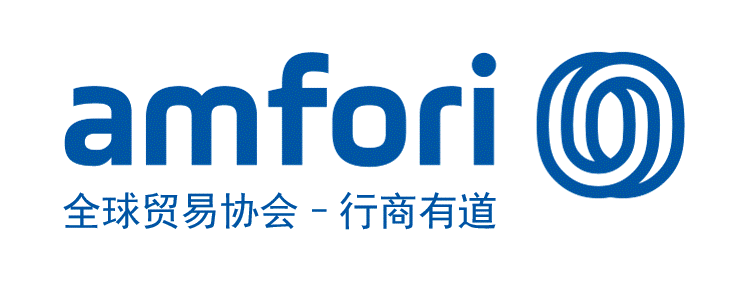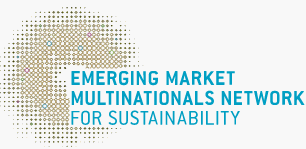China’s practices of AI for sustainable development
2021-08-12GoldenBeeGoldenBee0
AI for sustainable development has become a social hot spot. It is of great significance to conduct the AI for SDGs research project to combine the international vision with China’s local practices, promote government-industry-university-research cooperation, provide new ideas for relevant policy formulation, technology research and development and industrial application, and drive the development of AI towards a more sustainable future.
The AI for SDGs research project is a part of the Public Service Capacity Improvement Project in the Field of Industry and Information Technology — The Integration of AI and Real Economy. Under the guidance and with the strong support of the Science and Technology Division of the Ministry of Industry and Information Technology, the project was carried out by China Sustainability Tribune and the Artificial Intelligence Industry Alliance of China, with support from GoldenBee Consulting, Committee on Social Responsibility of the Chinese Electronics Standardization Association and other organizations.
On December 29, 2020, the online project summing-up meeting was held, which introduced the main research results. Representative enterprises shared their best practices of AI technology to fuel the SDGs. The meeting also invited experts to look into the future of AI and sustainable development. A better understanding of the deep integration of AI and UN SDGs, as well as its implementation in China and its future trend was reached.
Lin Bo, Deputy Leader of the project team, Vice President of GoldenBee Consulting, and Deputy Secretary General of the Committee on Social Responsibility of the Chinese Electronics Standardization Association, introduced the main research results of the AI for SDGs project. The project resulted in the Research Report on AI for SDGs — An Analysis and Observation Based on Chinese Enterprises’ AI Practice Cases, mainly including four parts.
Tracing the origin of AI for SDGs. The report summarizes the concepts and actions related to AI for SDGs at home and abraod from the perspective of clarifying the relations between AI and the UN SDGs.
Mapping and observing the UN SDGs against Chinese enterprises’ AI practices. By mapping Chinese enterprises’ AI practices with 17 SDGs, we have found out the basic status quo of China’s AI practices to power SDGs, provided a guidance and reference for Chinese enterprises to further carry out AI for SDGs actions, and laid a foundation for finding the direction and demonstration path of AI for SDGs.
Analysis of and Suggestions on AI for SDGs. After mapping Chinese enterprises’ AI practices with 17 SDGs, the report summarizes the six findings of mapping the SDGs against Chinese enterprises’ AI practices and proposes six suggestions to China’s AI for SDGs.
The typical cases of AI for SDGs. Through open solicitation and active contact, and adhering to the principle of voluntary participation, 11 typical cases were selected. While writing the cases, the UN SDGs were mapped against each case and enterprises’ practices were displayed from dimensions of understanding the UN SDGs and the specific problems reflected, identifying the advantages and feasibility of using AI to solve these problems, the path and method of integrating AI into problem solution, the implementation effects, enlightenment and future development.
In the project research, the project team mapped against the 17 SDGs and found that many enterprises gave full play to their advantages and carried out a variety of AI-enabled practices, providing innovative solutions and ideas for the realization of the SDGs. The AI for SDGs typical cases include practices of 11 enterprises. These practices, corresponding to 9 SDGs, leverage the advantages of AI technology to solve typical problems, and have achieved good results, showing a strong demonstration and influence on AI for SDGs practices.
· Several enterprises: supporting COVID-19 response with AI;
· Tomorrow Advancing Life: AI mandarin teaching system enables students to embrace a brighter future;
· Intel: cultivating AI personnel with chips;
· iFLYTEK: developing targeted and high-quality online teaching with AI;
· Dell: developing a defect detection system for AI machine vision precision manufacturing products in collaboration with Hongpu;
· JD: developing an open and innovative AI platform for smart supply chains;
· Uisee Technology: providing an unmanned logistics solution for airports;
· WeBank: supporting green mountains and waters conservation with AI;
· Huawei: protecting rainforest and biodiversity with AI;
· Baidu: finding missing person with AI, warming your way home with technology.
In this summary meeting, representatives from enterprises such as XAG, Intel, Tomorrow Advancing Life, iFLYTEK, Dell, WeBank, and Baidu shared their AI practices respectively and they all committed to promoting AI development and its innovation and application in their respective fields under the guidance of sustainable development and with the aim of solving social problems to benefit the society better.
After enterprise representatives introduced their respective practices, Guo Rui, Associate Professor from the Law School of Renmin University of China, a researcher of Renmin Law and Technology Institute, and director of the Research Center of Social Responsibility and Governance, shared his thoughts and suggestions.
Guo aid that AI governance had become an increasingly hot topic today, whether in terms of corporate social responsibility or AI’s long-term impact on mankind. It’s an upgrade of corporate social responsibility and a long-term proposition as well for enterprises to power sustainable development with AI. As for the changes and contributions that AI technology may make to human society, China Sustainability Tribune has conducted a forward-looking research in collaboration with multiple parties and completed an important and valuable report, which enables people from all walks of life to understand the development direction of AI technology more comprehensively. This is also an important content of enhancing AI governance.
Guo believed that the corporate development goals and the SDGs will become more consistent in the future with the strengthening of AI governance. He called for the academic circle and the business circle to work together to further the understanding of AI and sustainable development, to promote the healthy and orderly development of the AI industry, and to make AI better benefit mankind.
In the end, Yu Zhihong, project leader and President and Editor-in chief of China Sustainability Tribune made a summary on the project. He said that over the past year, with the joint efforts of all parties, the project had progressed smoothly and made an important step forward, which can be seen from the following four aspects:
First, an interaction between the concept and practice of AI for SDGs has been launched. The project not only traced the relations between AI and the SDGs, but also analyzed and studied the enterprises’ cases of powering SDGs with AI technology, which has practical reference value for enterprises.
Second, the attitudes towards AI have shifted from fear to excitement. Before carrying out the research, the project team had concerns and doubts about the application prospect of AI technology. After learning from a lot of enterprises’ practices during the research, they are full of confidence in the future development of AI and excited about the changes brought by AI technology.
Third, focus has extended from AI for SDGs to Tech for SDGs. In October this year, China Sustainability Tribune launched an activity under the theme of “GoldenKey -- Sustainable Development Solutions” Campaign. The event has set the category of Tech4SDG, which is mainly about enterprises’ cases of AI for SDGs, showing the charm of technology in solving problems.
Fourth, AI has gone from professional field to the public. China Sustainability Tribune reported the topic of AI for SDGs in our cover story, and set up a column on AI for SDGs, so that the public could have a better understanding of AI and sustainable development.
Yu Zhihong said that, in the future, the project team would keep leveraging the advantages of China Sustainability Tribune and build a platform for exchanges and communication to attract continuous attention from all parties to the AI for SDGs. He also hoped to work with such parties as the government, the academic circle and the industrial circle to make China’s AI practices warmer, more surprising and exciting, thus promoting AI to contribute more to sustainable development.
Best Practices
- The 100-year brand — Air Liquide also has a sense of juvenile
- Beijing Public Transportation Corporation: Developing green transportation to build a harmonious and livable capital
- CGN: Building a modern factory in barren deserts and developing a new win-win cooperation model along “Belt and Road”
Upcoming Event

All the materials on the site “Source: XXX (not from this site)” have been reprinted from other media. They do not imply the agreement by the site.
All the materials with “Source: CSR-China Website” are the copyright of CSR-China Website. None of them may be used in any form or by any means without permission from CSR-China Website.
GoldenBee Official WeChat
Copyright © Csr-china.net All Right Reserved.
京ICP备19010813号










